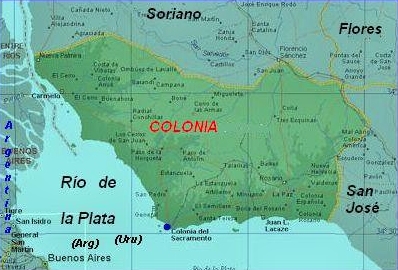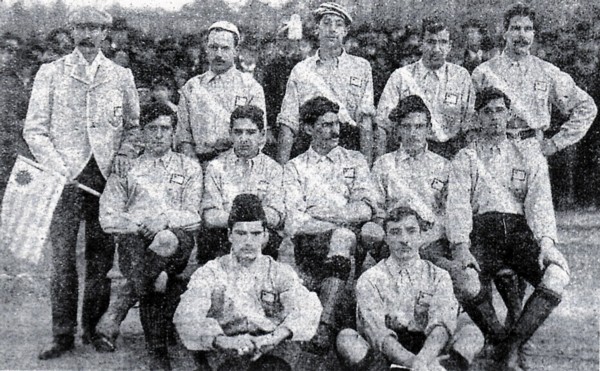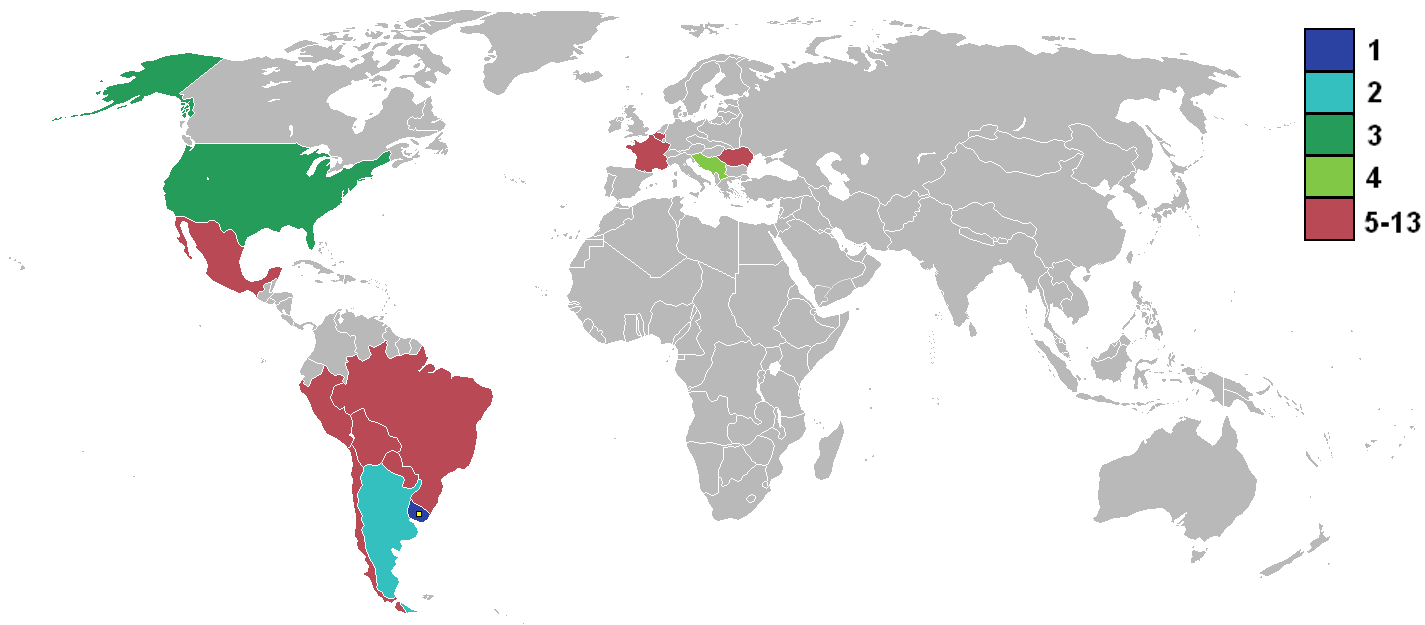|
Estadio Profesor Alberto Suppici
Estadio Profesor Alberto Suppici is a multi-use stadium in Colonia, Uruguay, Colonia, Uruguay. It is currently used mostly for football (soccer), football matches. The stadium holds 6,500 people. The stadium is named after Alberto Suppici, coach of Uruguay national football team during the 1930 FIFA World Cup, 1930 World Cup. It is the home stadium of Plaza Colonia and hosted matches during the 2003 South American Youth Championship. The Estadio Profesor Alberto Suppici is also known as a venue for rugby union. References [...More Info...] [...Related Items...] OR: [Wikipedia] [Google] [Baidu] |
Campus Municipal Profesor Alberto Suppici 2011
A campus is traditionally the land on which a college or university and related Institution, institutional buildings are situated. Usually a college campus includes library, libraries, lecture halls, residence halls, student centers or dining halls, and park-like settings. A modern campus is a collection of buildings and grounds that belong to a given institution, either academic or non-academic. Examples include the Googleplex and the Apple Campus. Etymology The word derives from a Latin word for "field" and was first used to describe the large field adjacent Nassau Hall of the College of New Jersey (now Princeton University) in 1774. The field separated Princeton from the small nearby town. Some other American colleges later adopted the word to describe individual fields at their own institutions, but "campus" did not yet describe the whole university property. A school might have one space called a campus, another called a field, and still another called a yard. History Th ... [...More Info...] [...Related Items...] OR: [Wikipedia] [Google] [Baidu] |
Colonia Del Sacramento
, settlement_type = Capital city , image_skyline = Basilica del Sanctísimo Sacramento.jpg , imagesize = , image_caption = Basílica del Santísimo Sacramento , pushpin_map = Uruguay , subdivision_type = Country , subdivision_name = , subdivision_type1 = Department , subdivision_name1 = , established_title = Founded , established_date = 1680 , founder = Manuel Lobo , population_as_of = 2011 Census , population_total = 26231 , population_density_km2 = , area_total_km2 = , timezone = UTC -3 , coordinates = , elevation_m = 27 , postal_code_type = Postal code , postal_code = 70000 , area_code_type = Dial plan , area_code = +598 452 (+5 digits) , blank_name = Climate , blank_info = Cfa , website = https://www.colonia.gub.uy/ , footnotes = Colonia ... [...More Info...] [...Related Items...] OR: [Wikipedia] [Google] [Baidu] |
Uruguay
Uruguay (; ), officially the Oriental Republic of Uruguay ( es, República Oriental del Uruguay), is a country in South America. It shares borders with Argentina to its west and southwest and Brazil to its north and northeast; while bordering the Río de la Plata to the south and the Atlantic Ocean to the southeast. It is part of the Southern Cone region of South America. Uruguay covers an area of approximately and has a population of an estimated 3.4 million, of whom around 2 million live in the metropolitan area of its capital and largest city, Montevideo. The area that became Uruguay was first inhabited by groups of hunter–gatherers 13,000 years ago. The predominant tribe at the moment of the arrival of Europeans was the Charrúa people, when the Portuguese first established Colónia do Sacramento in 1680; Uruguay was colonized by Europeans late relative to neighboring countries. The Spanish founded Montevideo as a military stronghold in the early 18th century bec ... [...More Info...] [...Related Items...] OR: [Wikipedia] [Google] [Baidu] |
Colonia Department
Colonia () is a department of southwestern Uruguay. Its capital is Colonia del Sacramento, the country's second oldest city. Weather Colonia has an annual average temperature of 20.4 °C (68.7 °F). In winter it has an average temperature of 9 °C (48.2 °F) and in summer it has an average temperature of 27 °C (80.6 °F) Economy The southwestern region of Uruguay, in which Colonia is located, is typically associated with dairy production. Its proximity to Buenos Aires makes it the main entry point for tourists traveling from Argentina to Uruguay. Tourism is also favored by the presence of a World Heritage Site. The PepsiCo plant located in the department's capital, is one of the three largest worldwide, employing more than 2,000 people and serving the entire Latin American import market. The plant operates under special economic zone legislation, and as of November 2019, has successfully approved an enlargement investment for $65 million. Populati ... [...More Info...] [...Related Items...] OR: [Wikipedia] [Google] [Baidu] |
Plaza Colonia
Club Plaza Colonia de Deportes, or simply Plaza Colonia, is a Uruguayan professional football club from Colonia del Sacramento, that competes in the Uruguayan Primera Division. Founded in 1917, the club plays its home games at the 3,000 seater Estadio Juan Gaspar Prandi. History The club was founded on April 22, 1917 by Alberto Suppici. They played in the Regional league of Colonia until 1999. They gained their affiliation with AUF in 2000. In 2001 they won promotion to the Primera División Uruguaya and in their debut season they finished in 7th place. In 2003 the club finally fell to the Second Division after a poor campaign. In 2004 the club was promoted back to the first division, but in 2005 they went back down after another poor campaign. In 2006 they did not play the championship because of financial difficulties. They re-entered official competitions for the 2006–07 season, playing once more in the Uruguayan 2nd Division. In May 2016 they won the Clausura Champio ... [...More Info...] [...Related Items...] OR: [Wikipedia] [Google] [Baidu] |
Stadium
A stadium ( : stadiums or stadia) is a place or venue for (mostly) outdoor sports, concerts, or other events and consists of a field or stage either partly or completely surrounded by a tiered structure designed to allow spectators to stand or sit and view the event. Pausanias noted that for about half a century the only event at the ancient Greek Olympic festival was the race that comprised one length of the stadion at Olympia, where the word "stadium" originated. Most of the stadiums with a capacity of at least 10,000 are used for association football. Other popular stadium sports include gridiron football, baseball, cricket, the various codes of rugby, field lacrosse, bandy, and bullfighting. Many large sports venues are also used for concerts. Etymology "Stadium" is the Latin form of the Greek word " stadion" (''στάδιον''), a measure of length equalling the length of 600 human feet. As feet are of variable length the exact length of a stadion depends on the ... [...More Info...] [...Related Items...] OR: [Wikipedia] [Google] [Baidu] |
Colonia, Uruguay
, settlement_type = Capital city , image_skyline = Basilica del Sanctísimo Sacramento.jpg , imagesize = , image_caption = Basílica del Santísimo Sacramento , pushpin_map = Uruguay , subdivision_type = Country , subdivision_name = , subdivision_type1 = Department , subdivision_name1 = , established_title = Founded , established_date = 1680 , founder = Manuel Lobo , population_as_of = 2011 Census , population_total = 26231 , population_density_km2 = , area_total_km2 = , timezone = UTC -3 , coordinates = , elevation_m = 27 , postal_code_type = Postal code , postal_code = 70000 , area_code_type = Dial plan , area_code = +598 452 (+5 digits) , blank_name = Climate , blank_info = Cfa , website = https://www.colonia.gub.uy/ , footnotes = Coloni ... [...More Info...] [...Related Items...] OR: [Wikipedia] [Google] [Baidu] |
Football (soccer)
Association football, more commonly known as football or soccer, is a team sport played between two teams of 11 players who primarily use their feet to propel the ball around a rectangular field called a pitch. The objective of the game is to score more goals than the opposition by moving the ball beyond the goal line into a rectangular framed goal defended by the opposing side. Traditionally, the game has been played over two 45 minute halves, for a total match time of 90 minutes. With an estimated 250 million players active in over 200 countries, it is considered the world's most popular sport. The game of association football is played in accordance with the Laws of the Game, a set of rules that has been in effect since 1863 with the International Football Association Board (IFAB) maintaining them since 1886. The game is played with a football that is in circumference. The two teams compete to get the ball into the other team's goal (between the posts and under t ... [...More Info...] [...Related Items...] OR: [Wikipedia] [Google] [Baidu] |
Alberto Suppici
Alberto Horacio Suppici (20 November 1898 – 21 June 1981) was a Uruguayan footballer and coach who won the first ever FIFA World Cup, leading the Uruguay team in the 1930 tournament on home soil. Suppici is known as el Profesor (the Professor). His cousin was the professional driver Héctor Suppici Sedes. Biography On 22 April 1917, Suppici founded the football club Plaza Colonia in Colonia del Sacramento, his hometown. The club's 12 000-capacity home ground has been named Estadio Profesor Alberto Suppici in his honour. As technical director of Uruguay, Suppici coached the side to third in the 1929 South American Championship, the precursor to the modern Copa América. At the inaugural FIFA World Cup in his home nation of Uruguay, Suppici dropped goalkeeper Andrés Mazali, who had won a gold medal in the 1928 Olympic final, from the national team after he was caught breaking curfew and failing to arrive at the team hotel in time in Montevideo prior to the tournament. Su ... [...More Info...] [...Related Items...] OR: [Wikipedia] [Google] [Baidu] |
Uruguay National Football Team
The Uruguay national football team ( es, Selección de fútbol de Uruguay) represents Uruguay in international Association football, football, and is controlled by the Uruguayan Football Association, the governing body for football in Uruguay. The Uruguayan team is commonly referred to as ''La Celeste'' (The Sky Blue). Regarded to be one of the greatest footballing nations of all time, Uruguay has won the Copa América 15 times being tied with Argentina for the most titles in the history of the tournament. Uruguay won their most recent title in 2011 Copa América, 2011. Additionally, Uruguay are the holders of Four stars above Uruguay's football crest, four FIFA World Championships: The team has won the FIFA World Cup twice, including the first World Cup in 1930 FIFA World Cup, 1930 as hosts, defeating Argentina 4–2 in the final. Their second title came in 1950 FIFA World Cup, 1950, upsetting host Brazil 2–1 in the final match, which had the highest attendance for a football ... [...More Info...] [...Related Items...] OR: [Wikipedia] [Google] [Baidu] |
1930 FIFA World Cup
The 1930 FIFA World Cup was the inaugural FIFA World Cup, the world championship for men's national football teams. It took place in Uruguay from 13 to 30 July 1930. FIFA, football's international governing body, selected Uruguay as host nation, as the country would be celebrating the centenary of its first constitution and the Uruguay national football team had successfully retained their football title at the 1928 Summer Olympics. All matches were played in the Uruguayan capital, Montevideo, the majority at the Estadio Centenario, which was built for the tournament. Thirteen teams (seven from South America, four from Europe, and two from North America) entered the tournament. Only a few European teams chose to participate because of the difficulty of traveling to South America in the context of the Great Depression. The teams were divided into four groups, with the winner of each group progressing to the semi-finals. The first two World Cup matches took place simultaneously a ... [...More Info...] [...Related Items...] OR: [Wikipedia] [Google] [Baidu] |
2003 South American Youth Championship
The 2003 South American Youth Championship (Sudamericana sub-20) is a football competition contested by all ten U-20 national football teams of CONMEBOL. The tournament was held in Uruguay between 4 January and 28 January 2003, it was the 21st time the competition has been held and the second to take place in Uruguay. Argentina won their fourth trophy. Venues Format The teams are separated in two groups of five, and each team plays four matches in a pure round-robin stage. The three top competitors advance to a single final group of six, wherein each team plays five matches. The top four teams in the final group qualify to the 2003 FIFA U-20 World Cup. Squads For a list of all the squads in the final tournament, see 2003 South American Youth Championship squads. The following teams entered the tournament: * * * * * * * * * (host) * First group stage When teams finish level of points, the final order determined according to: # superior goal difference in all match ... [...More Info...] [...Related Items...] OR: [Wikipedia] [Google] [Baidu] |


.jpg)




